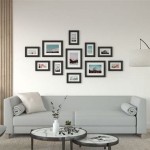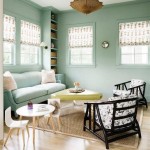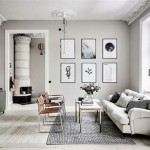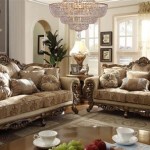Living Room Rugs on Hardwood Floors: A Comprehensive Guide
Hardwood floors bring a timeless elegance and warmth to any living space. However, they can also feel cold and impersonal without strategic softening elements. A well-chosen rug serves both an aesthetic and functional purpose, adding comfort, defining areas, and protecting the vulnerable surface of the hardwood itself. Selecting the right rug for a living room with hardwood floors requires careful consideration of size, material, style, and placement.
Beyond aesthetics, a rug acts as a crucial layer of protection against daily wear and tear. Foot traffic, furniture movement, and even sunlight can diminish the beauty of hardwood over time. A strategically placed rug can effectively mitigate these damaging factors, preserving the longevity and appearance of the flooring beneath. Furthermore, rugs contribute significantly to the room's acoustics, absorbing sound and reducing echoes, creating a more pleasant and inviting atmosphere.
This article will explore the key considerations when selecting and using rugs in a living room with hardwood floors, focusing on how to maximize their benefits while maintaining the integrity and beauty of the underlying flooring.
Selecting the Right Size and Shape
Determining the appropriate rug size is paramount to achieving a balanced and visually appealing living room. A rug that is too small can make the room feel disjointed and awkward, while an oversized rug can overwhelm the space. The ideal size depends on the room's dimensions, furniture arrangement, and desired effect.
One common approach is to ensure that at least the front legs of the sofas and chairs rest on the rug. This anchors the furniture grouping and creates a sense of cohesion. For larger living rooms, all furniture pieces can be placed entirely on the rug, establishing a defined seating area. Regardless of the chosen arrangement, it is generally recommended to leave a border of exposed hardwood around the perimeter of the rug, allowing the flooring to remain a visible and integral part of the room's design.
Regarding shape, the rug should complement the overall layout of the living room. Rectangular rugs are a versatile choice for most spaces, particularly those with a traditional or formal design. Round rugs can soften angular layouts and work well under circular coffee tables. Square rugs are suitable for square rooms, creating a sense of symmetry. Irregularly shaped rugs can add an element of visual interest and are often used in more eclectic or bohemian-style living rooms. The rug shape should also consider the placement of the fireplace, the entry door, and the flow of traffic in the room.
Before purchasing a rug, it is essential to accurately measure the living room and map out the intended furniture arrangement. Using painter's tape to outline the proposed rug size on the floor can help visualize the scale and ensure that it fits proportionally within the space. Consider the possibility of custom-sized rugs tailored to the specific dimensions of the room if the standard sizes don’t work well.
The shape and size of the rug also influence the perception of space. A larger rug can visually expand a small room, while a strategically placed runner can lengthen a narrow hallway. Light-colored rugs tend to make a space feel brighter and more open, while darker rugs can ground a larger room and create a sense of intimacy.
Material Considerations for Hardwood Floor Protection and Aesthetics
The choice of rug material significantly impacts both the comfort underfoot and the level of protection afforded to the hardwood floor. Certain materials are more prone to shedding, fading, or causing abrasion, while others offer superior durability and resistance to these issues.
Wool is a popular and enduring choice for living room rugs. It is naturally durable, stain-resistant, and flame-retardant. Wool rugs offer excellent insulation and a luxurious feel. However, wool rugs can be more expensive than rugs made from synthetic fibers. Regular vacuuming is necessary to maintain their appearance and prevent the accumulation of dust and debris.
Synthetic materials such as nylon and polypropylene offer a more affordable alternative to wool. These fibers are highly resistant to stains, fading, and mildew, making them suitable for high-traffic areas. Synthetic rugs are also relatively easy to clean and maintain. However, they may not possess the same luxurious feel or durability as wool rugs.
Natural fibers like jute, sisal, and seagrass offer a more textured and organic look. These materials are durable and environmentally friendly, but can be less comfortable underfoot than wool or synthetic fibers. Jute rugs are relatively soft, but they can be prone to shedding and staining. Sisal and seagrass rugs are more durable and stain-resistant, but they can be rougher in texture. These natural fiber rugs work best in more casual living rooms and can add a coastal or rustic feel.
Cotton rugs are soft and lightweight, making them easy to clean and maintain. However, they are less durable than wool or synthetic rugs and can be prone to fading and shrinking. Cotton rugs are a good choice for low-traffic areas or for layering with other rugs.
Regardless of the chosen material, using a rug pad underneath is crucial for protecting the hardwood floor. A rug pad provides cushioning, prevents the rug from slipping, and allows for better airflow, reducing the risk of moisture buildup and potential damage to the flooring. Rug pads are available in various materials, including felt, rubber, and foam, each offering different levels of cushioning and grip. It is important to select a rug pad that is specifically designed for use with hardwood floors to avoid any staining or discoloration.
Style and Color: Harmonizing with the Living Room Décor
The style, color, and pattern of the rug should complement the overall aesthetic of the living room, creating a cohesive and harmonious space. A rug can serve as a focal point, adding visual interest and personality, or it can blend seamlessly with the existing décor, providing a subtle backdrop.
Traditional living rooms often benefit from rugs with classic patterns, such as Persian, Oriental, or floral designs. Rich colors, intricate details, and a sense of formality are hallmarks of traditional rug styles. These rugs can add warmth, elegance, and a touch of history to the space.
Modern living rooms often feature rugs with geometric patterns, abstract designs, or solid colors. Simplicity, clean lines, and a focus on functionality are characteristic of modern rug styles. Neutral colors, such as gray, beige, and white, are popular choices for modern living rooms, creating a sense of spaciousness and tranquility.
Bohemian living rooms often incorporate rugs with eclectic patterns, vibrant colors, and a mix of textures. Vintage rugs, kilim rugs, and Moroccan rugs are common choices for bohemian-style living rooms. These rugs add a sense of personality, creativity, and global influence to the space.
The rug's color should consider the color palette of the walls, furniture, and accessories in the living room. A rug can either complement the existing colors or provide a contrasting accent. A neutral rug can serve as a grounding element, allowing the other elements in the room to take center stage. A brightly colored rug can add a pop of color and inject energy into the space.
Patterned rugs can add visual interest and depth to a living room. Small-scale patterns work well in smaller rooms, while larger-scale patterns can make a bold statement in larger rooms. When choosing a patterned rug, it is important to consider the scale and complexity of the pattern in relation to the other patterns in the room. Avoid overwhelming the space with too many competing patterns.
Consider the impact of natural light on the rug's color. Colors can appear different under varying light conditions. It is advisable to view the rug in the living room's lighting before making a final decision. Samples can often be borrowed from retailers to ensure that the rug harmonizes with the space’s existing colors and textures.
When placing a rug, try to balance the visual weight in the room. A dark, heavy rug can anchor a light and airy space, while a light and airy rug can brighten up a darker room. Experiment with different rug placements to find the arrangement that best suits the room's layout and your personal style.

A Guide To Using Area Rugs On Hardwood Floors Renaissance

How To Decorate Hardwood Floors With Area Rugs Cyrus

100 Examples Of Living Rooms With Area Rugs Photos

Tips For Placing Rugs On Hardwood Floors The Rug Est

How To Decorate Hardwood Floors With Area Rugs Cyrus

How To Use Area Rugs On Hardwood Floor 5 Expert Tips

Are Rug Pads Necessary For Your Hardwood Floors Cameron The Sandman Wood Flooring Contractor

How To Choose An Area Rug Next Day Floors

Area Rugs Cardoza Flooring Llc

Matching Rugs With Your Hardwood Floors Flooring America








